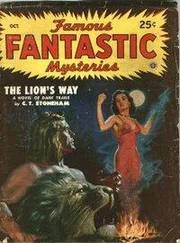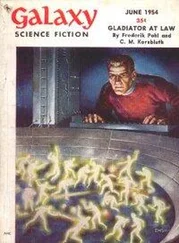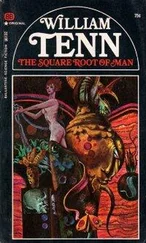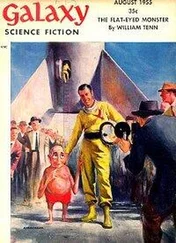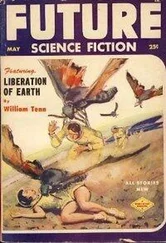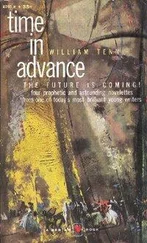William Tenn - The Masculinist Revolt
Здесь есть возможность читать онлайн «William Tenn - The Masculinist Revolt» весь текст электронной книги совершенно бесплатно (целиком полную версию без сокращений). В некоторых случаях можно слушать аудио, скачать через торрент в формате fb2 и присутствует краткое содержание. Год выпуска: 1965, Издательство: Mercury Press, Inc., Жанр: Юмористическая фантастика, на английском языке. Описание произведения, (предисловие) а так же отзывы посетителей доступны на портале библиотеки ЛибКат.
- Название:The Masculinist Revolt
- Автор:
- Издательство:Mercury Press, Inc.
- Жанр:
- Год:1965
- ISBN:нет данных
- Рейтинг книги:3 / 5. Голосов: 1
-
Избранное:Добавить в избранное
- Отзывы:
-
Ваша оценка:
- 60
- 1
- 2
- 3
- 4
- 5
The Masculinist Revolt: краткое содержание, описание и аннотация
Предлагаем к чтению аннотацию, описание, краткое содержание или предисловие (зависит от того, что написал сам автор книги «The Masculinist Revolt»). Если вы не нашли необходимую информацию о книге — напишите в комментариях, мы постараемся отыскать её.
The Masculinist Revolt — читать онлайн бесплатно полную книгу (весь текст) целиком
Ниже представлен текст книги, разбитый по страницам. Система сохранения места последней прочитанной страницы, позволяет с удобством читать онлайн бесплатно книгу «The Masculinist Revolt», без необходимости каждый раз заново искать на чём Вы остановились. Поставьте закладку, и сможете в любой момент перейти на страницу, на которой закончили чтение.
Интервал:
Закладка:
The Masculinist Revolt
by William Tenn
I
The Coming of the Codpiece
Historians of the period between 1990 and 2015 disagree violently on the causes of the Masculinist Revolt. Some see it as a sexual earthquake of nationwide proportions that was long overdue. Others contend that an elderly bachelor founded the Movement only to save himself from bankruptcy and saw it turn into a terrifying monster that swallowed him alive.
This P. Edward Pollyglow—fondly nicknamed “Old Pep” by his followers—was the last of a family distinguished for generations in the men’s wear manufacturing line. Pollyglow’s factory produced only one item, men’s all-purpose jumpers, and had always operated at full capacity—up to the moment the Interchangeable Style came in. Then, abruptly, overnight it seemed, there was no longer a market for purely male apparel.
He refused to admit that he and all of his machinery had become obsolete as the result of a simple change in fashion. What if the Interchangeable Style ruled out all sexual differentiation? “Try to make us swallow that!” he cackled at first. “Just try!”
But the red ink on his ledgers proved that his countrymen, however unhappily, were swallowing it.
Pollyglow began to spend long hours brooding at home instead of sitting nervously in his idle office. Chiefly he brooded on the pushing-around men had taken from women all through the twentieth century. Men had once been proud creatures; they had asserted themselves; they had enjoyed a high rank in human society. What had happened?
Most of their troubles could be traced to a development that occurred shortly before World War I, he decided. “Man-tailoring,” the first identifiable villain.
When used in connection with women’s clothes, “man-tailoring” implied that certain tweed skirts and cloth coats featured unusually meticulous workmanship. Its vogue was followed by the imitative patterns: slacks for trousers, blouses for shirts, essentially male garments which had been frilled here and furbelowed there and given new, feminine names. The “his-and-hers” fashions came next; they were universal by 1991.
Meanwhile, women kept gaining prestige and political power. The F.E.P.C. started policing discriminatory employment practices in any way based upon sex. A Supreme Court decision (Mrs. Staub’s Employment Agency for Lady Athletes v. The New York State Boxing Commission) enunciated the law in Justice Emmeline Craggly’s historic words: “Sex is a private, internal matter and ends at the individual’s skin. From the skin outwards, in family chores, job opportunities, or even clothing, the sexes must be considered legally interchangeable in all respects save one. That one is the traditional duty of the male to support his family to the limit of his physical powers—the fixed cornerstone of all civilized existence.”
Two months later, the Interchangeable Style appeared at the Paris openings.
It appeared, of course, as a version of the all-purpose jumper, a kind of short-sleeved tunic worn everywhere at that time. But the men’s type and the women’s type were now fused into a single Interchangeable garment.
That fusion was wrecking Pollyglow’s business. Without some degree of maleness in dress, the workshop that had descended to him through a long line of manufacturing ancestors unquestionably had to go on the auctioneer’s block.
He became increasingly desperate, increasingly bitter.
One night, he sat down to study the costumes of bygone eras. Which were intrinsically and flatteringly virile—so virile that no woman would dare force her way into them?
Men’s styles in the late nineteenth century, for example. They were certainly masculine in that you never saw a picture of women wearing them, but what was to prevent the modern female from doing so if she chose? And they were far too heavy and clumsy for the gentle, made-to-order climates of today’s world.
Back went Pollyglow, century by century, shaking his head and straining his eyes over ancient, fuzzy woodcuts. Not this, no, nor that. He was morosely examining pictures of knights in armor and trying to imagine a mailed shirt with a zipper up the back, when he leaned away wearily and noticed a fifteenth-century portrait lying among the pile of rejects at his feet.
This was the moment when Masculinism began.
Several of the other drawings had slid across the portrait, obscuring most of it. The tight-fitting hose over which Pollyglow had bitten his dry old lips negatively—these were barely visible. But between them, in emphatic, distinctive bulge, between them —
The codpiece!
This little bag which had once been worn on the front of the hose or breeches—how easily it could be added to a man’s jumper! It was unquestionably, definitively male: any woman could wear it, of course, but on her clothing it would be merely a useless appendage, nay, worse than that, it would be an empty mockery.
He worked all night, roughing out drawings for his designers. In bed at last, and exhausted, he was still bubbling with so much enthusiasm that he forgot about sleep and hitched his aching shoulder blades up against the headboard. Visions of codpieces, millions of them, all hanging from Pollyglow Men’s Jumpers, danced and swung and undulated in his head as he stared into the darkness.
But the wholesalers refused the new garment. The old Pollyglow Jumper—yes: there were still a few conservative, fuddy-duddy men around who preferred familiarity and comfort to style. But who in the world would want this unaesthetic novelty? Why it flew in the very face of the modern doctrine of interchangeable sexes!
His salesmen learned not to use that as an excuse for failure. “Separateness!” he would urge them as they slumped back into the office. “Differentness! You’ve got to sell them on separateness and differentness! It’s our only hope—it’s the hope of the world!”
Pollyglow almost forgot the moribund state of his business, suffocating for lack of sales. He wanted to save the world. He shook with the force of his revelation: he had come bearing a codpiece and no one would have it. They must—for their own good.
He borrowed heavily and embarked upon a modest advertising campaign. Ignoring the more expensive, general-circulation media, he concentrated his budget in areas of entertainment aimed exclusively at men. His ads appeared in high-rated television shows of the day, soap operas like “The Senator’s Husband,” and in the more popular men’s magazines— Cowboy Confession Stories and Scandals of World War I Flying Aces.
The ads were essentially the same, whether they were one-pagers in color or sixty-second commercials. You saw a hefty, husky man with a go-to-hell expression on his face. He was smoking a big, black cigar and wore a brown derby cocked carelessly on the side of his head. And he was dressed in a Pollyglow Men’s Jumper from the front of which there was suspended a huge codpiece in green or yellow or bright, bright red.
Originally, the text consisted of five emphatic lines:
Early in the campaign, however, a market research specialist employed by Pollyglow’s advertising agency pointed out that the word “masculine” had acquired unfortunate connotations in the last few decades. Tons of literature, sociological and psychological, on the subject of overcompensation, or too-overt maleness, had resulted in “masculine” being equated with “homosexuality” in people’s minds.
Читать дальшеИнтервал:
Закладка:
Похожие книги на «The Masculinist Revolt»
Представляем Вашему вниманию похожие книги на «The Masculinist Revolt» списком для выбора. Мы отобрали схожую по названию и смыслу литературу в надежде предоставить читателям больше вариантов отыскать новые, интересные, ещё непрочитанные произведения.
Обсуждение, отзывы о книге «The Masculinist Revolt» и просто собственные мнения читателей. Оставьте ваши комментарии, напишите, что Вы думаете о произведении, его смысле или главных героях. Укажите что конкретно понравилось, а что нет, и почему Вы так считаете.

